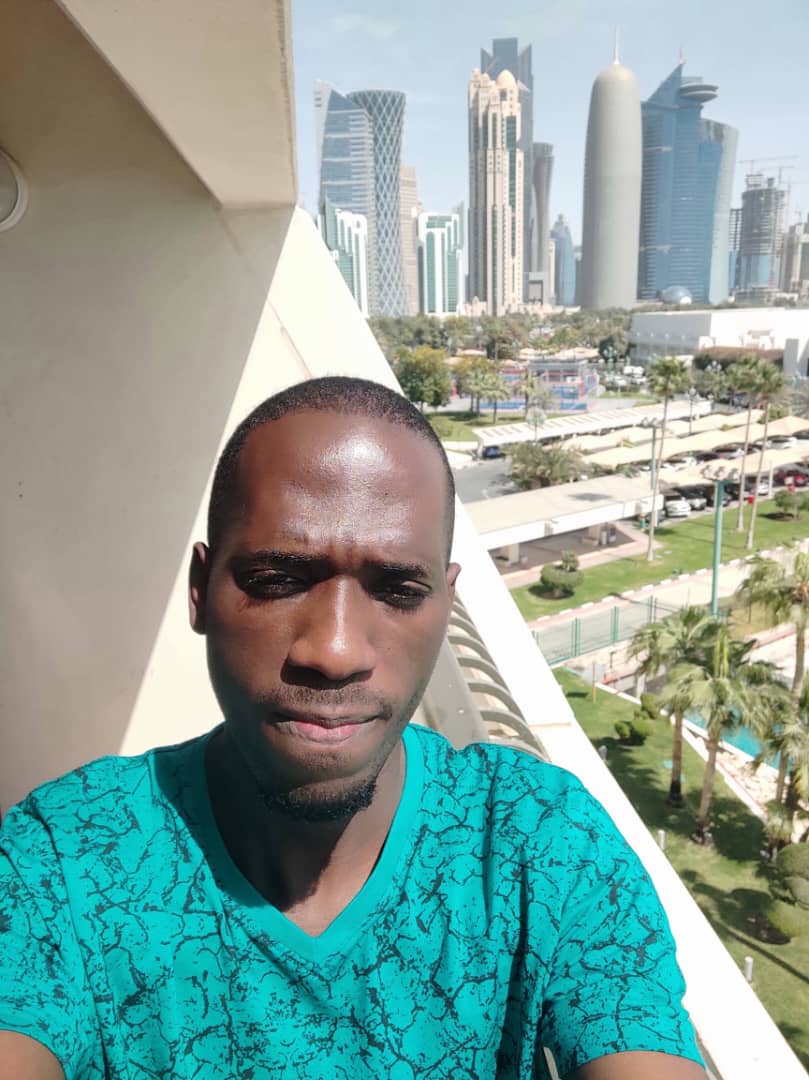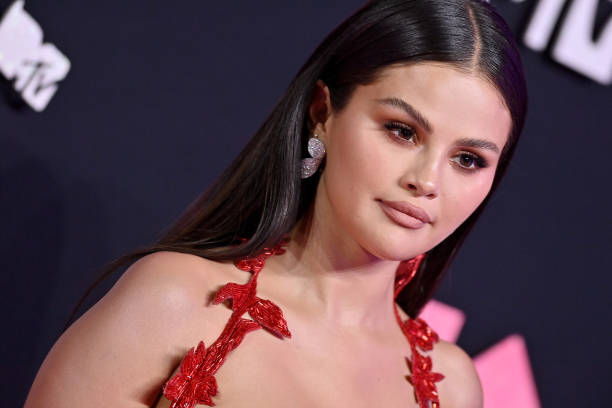Hinduism is one of the oldest religions in the world, originating in Central Asia and the Indus Valley. It is also known as Sanatan Dharma, which means “Eternal Order”. One of the most common questions about Hinduism is, “Who is the One God in Hinduism?” The answer to this question is Brahman. However, the concept of God in Hinduism is complex and multifaceted, with different interpretations and beliefs. In this article, we will explore the different interpretations of Hinduism and the Hindu Trinity.
Who is the One God in Hinduism?
Hinduism, the oldest religion in the world, has a complex understanding of the concept of God. While it may appear that Hindus worship many gods and goddesses, the belief in one supreme God, known as Brahman, is central to Hinduism.
Brahman is considered the highest, supreme, and universal God in Hinduism. However, the interpretation of God in Hinduism can vary, leading to different beliefs and practices within the religion. Different Interpretations of God in Hinduism:
- Monotheism: Some Hindus view Hinduism as monotheistic, recognizing Brahman as the one and only God. They believe that all other deities are manifestations or aspects of Brahman.
- Polytheism: Hinduism is often perceived as polytheistic due to the worship of numerous gods and goddesses. Each deity represents different aspects of the divine and may be worshipped individually. However, these deities are seen as manifestations of the one supreme God, Brahman2.
- Henotheism: Henotheism refers to the worship of one God without denying the existence of other gods. In Hinduism, this means that while Brahman is recognized as the supreme God, other deities are also acknowledged and worshipped.
- Pantheism: Some Hindus interpret God in Hinduism as pantheistic, where the deities are seen as representing aspects of the natural world. In this view, everything in the universe, including the deities, is considered divine2.
The concept of God in Hinduism is multifaceted and can be interpreted in various ways. While Brahman is considered the one supreme God in Hinduism, the religion allows for different beliefs and practices. Some Hindus perceive Hinduism as monotheistic, while others view it as polytheistic, henotheistic, or pantheistic.
The worship of multiple deities is seen as a way to connect with different aspects of the divine. Understanding the diverse interpretations of God in Hinduism is essential to grasp the complexity and richness of this ancient religion.
The Origin of the Concept of God in Hinduism.
The origins of the concept of God in Hinduism can be traced back to the Vedic period starting around 1500 BCE. The early Vedic hymns describe various deities associated with natural forces like Agni (Fire), Vayu (Wind), Surya (Sun) etc. Later, more abstract concepts emerged like Prajapati (Lord of Creatures) identified with the Purusha Sukta hymn in the Rig Veda.
Over time, the Vedic gods were consolidated into the Trimurti of Brahma, Vishnu and Shiva as the main manifestations of the Supreme Brahman. The Upanishads presented philosophical ideas about the ultimate reality or Brahman. The diverse Hindu traditions have different conceptualizations of God based on texts like the Bhagavad Gita and Puranas.
Hinduism and Monotheism.
Hinduism is not a monotheistic religion in the same sense as Christianity or Islam which worship a single male deity. Hinduism has a broad pantheon of gods and goddesses representing different aspects of the one true Divine.
However, philosophically, the multitude of Hindu gods are considered forms, manifestations or aspects of the one Supreme Brahman. Different Hindu denominations may be monistic, pantheistic, panentheistic, polytheistic, monotheistic or henotheistic accepting the existence of multiple deities but focusing worship on one deity.
The Hindu Concept of God Differs from Other Religions.
The Hindu concept of God differs significantly from Abrahamic religions where God is seen as a separate supernatural entity. In Hinduism, Gods are symbolic manifestations of Brahman which represents the immanent essence of existence, consciousness and bliss.
Hindu traditions view the Divine as both immanent (present in creation) and transcendent (beyond all forms). Brahman has no specific gender, anthropomorphic qualities or finite form. It is the inner consciousness experienced by yogis and mystics. The concept is more metaphysical and abstract than the personal God of monotheism.
Different Interpretations of God in Hinduism.
There are diverse interpretations of God in different Hindu philosophical schools. Advaita Vedanta conceives Brahman as an impersonal Absolute without attributes. Dvaita sees God as a personal being distinct from individual souls. Vishishtadvaita believes the Divine exists with inseparable attributes.
For Vaishnavism, Vishnu represents the Supreme Godhead. Shaivism considers Shiva as the personification of Brahman. Shaktism worships the Goddess or Devi as the highest reality. Hinduism allows devotion to one’s preferred deity or ishta-devata as a manifestation of the universal Brahman.
The Nature of Brahman in Hinduism.
Brahman is the highest universal principle, ultimate reality and Absolute in Hinduism conceptualized in the Vedas and Upanishads. Brahman is formless, eternal, infinite, omnipresent, the source of all existence transcending time and space.
Brahman is not an external deity but the unchanging ground of being permeating all essence. Brahman defies exact definition or description. Self-realized yogis experience the non-dual Brahman within their own consciousness to achieve moksha or liberation.
How Brahman Differs from Other Hindu Gods.
Brahman represents the formless, ineffable supreme principle beyond human attributes or limitations. Other Hindu gods like Vishnu, Shiva, Durga are personalized forms or aspects through which devotees conceptualize and worship the infinite Brahman.
These anthropomorphic gods represent particular qualities of the Divine but are not the ultimate reality in their own right. They are sacred manifestations or symbols to help focus meditation on Brahman. But Brahman transcends any particular name, form, quality or visualization.
The Hindu Trinity of Brahma, Vishnu and Shiva.
The Hindu Trinity known as Trimurti consists of the gods Brahma, Vishnu and Shiva who personify the three main functions of creation, preservation and destruction. Brahma is the creator, Vishnu maintains and protects while Shiva dissolves to allow renewal.
However, their roles overlap. Each member of the Trimurti is associated with cosmic functions but their ultimate essence is Brahman. Some Puranic texts describe them as triple aspects of the same Divine. Others interpret them as three distinct forms of Godhead in hierarchical relation to Brahman.
The Trinity’s Relation to Brahman.
While each deity of the Trinity represents cosmic powers of creation, protection and dissolution; they are still seen as dependent manifestations or agents of the sole divine source – Brahman. Brahman has no limitations or qualities but the Trinity symbolizes how the formless Absolute manifests existence through plurality.
Brahma emerges from Brahman to create, Vishnu preserves the created order, Shiva destroys forms so they can be re-created by Brahma. Thus they represent the eternal cyclic process of cosmic existence sustained by the true Divine Essence beyond the Trinity.
The Role of Brahma in Hinduism.
Brahma, the first member of the Trimurti, is the creative force who brings the universe into being. He is hailed as Svayambhu, born from himself and the original creator. Brahma represents the activating, passionate rajas guna. He originates the process of evolution disseminating souls into material existence to fulfill karma.
Brahma is associated with the Vedas and knowledge that provides the impetus for cosmic manifestation. He is the grand-father and guru figure but rarely worshipped for himself. Brahma initiates reality while Vishnu and Shiva act on what he created.
The Role of Vishnu in Hinduism.
Vishnu is the preserver and sustainer of existence. He embodies goodness, mercy and balance – the pure, luminous sattva guna that sustains order in the cosmos. Vishnu maintains harmony, protects the righteous and fights evil. He is associated with vital energies of life, renewal and preservation symbolized by his blue color.
Vishnu sustains creation by incarnating in different forms to restore dharma. His best known avatars are Rama and Krishna. Vaishnavism worships Vishnu as the Supreme Being. His eternal resting place is the causal waters.
The Role of Shiva in Hinduism.
Shiva, the third member of the Hindu trinity, represents destruction and dissolution. He embodies the tamasic guna demonstrating chaos, transformation and reinvention. Shiva destroys finite forms and ego attachments so renewal can happen. He is the destructive force of fire and thunderstorms.
Shiva’s cosmic dance destroys imperfections to reconcile opposites. He is worshipped as the eternal yogi and ideal ascetic. His symbol is the lingam representing fertility and energy of life. For Shaivism, Shiva is the Supreme Reality and primal source of existence.
How Hindus Worship God.
Hindus worship God through ritual offerings, chanting of mantras, devotional songs, meditation, worship of murtis, yajnas, pujas, yatras, vrats, invoking divine presence through darshan, celebrating festivals, practicing dharma, realizing one’s unity with Brahman and service to mankind.
The numerous Hindu deities represent Divine aspects that devotees choose to worship as their ishta-devata. But ultimate devotion is offered to the impersonal omnipresent Brahman.
The Significance of Idol Worship.
Idol or murti puja is very important in Hinduism. The murti is conceived as a manifestation of the Divine that makes it easier for devotees to meditate on God’s qualities. The image is infused with divine presence through rituals.
Idols represent different forms of Brahman that aid focus and expression of devotion. They are venerated as embodiments of God, not worshipped as God themselves. The infinite Brahman can’t be limited but sacred images act as a medium to access the Supreme through tangible forms.
How Hindu Sects View God.
Philosophically inclined sects like Advaita Vedanta emphasize formless Brahman as the sole unchanging reality. Devotional sects like Vaishnavism worship different personal gods like Vishnu and his avatars. For them the impersonal Absolute has qualities expressed through divine incarnations.
Tantric sects use ritual identifications with various Hindu deities to achieve self-realization. Smarta Hindus integrate multiple deity traditions as aspects of Brahman. Most Hindus blend notions of saguna Brahman (with attributes) and nirguna Brahman (without attributes).
Karma, God and Hinduism.
Karma and rebirth are intrinsically tied to the Hindu vision of God. Karma refers to action driven by intention that affects one’s circumstances in the next life. The cycle of reincarnation continues till karma is balanced and the soul realizes its identity with Brahman.
Belief in karma inspires ethical living to improve one’s station or ultimately achieve moksha. Brahman allows karma to propel souls till they renounce external rewards, and directly seek the Divine within through devotion, wisdom and non-attachment.
The Caste System and Concept of God.
The Hindu caste system divides society into hierarchical groups based on birth and occupation. Brahmins, as priests, are supposed to help others pursue dharma and moksha. The lower castes serve social functions that support the system.
Caste dharma maintains the status quo. Brahman transcends caste and offers all Hindus the spiritual promise of discovering their Divine nature. But caste prejudices persist particularly against Dalits. Social reformers have reinterpreted caste in egalitarian ways consistent with Hindu teachings on the universal presence of Brahman.
Henotheism and Polytheism in Hinduism.
Henotheism refers to worship of one chosen god without denying existence of others. Hindu traditions like Shaivism focus on one Ishta-devata or aspects like Shiva’s blessings but acknowledge other deities. Polytheism denotes belief in multiple gods, often associated with distinct human emotions.
Hinduism incorporates polytheistic devotion to several Gods with monistic philosophy of Brahman unity. Common people relate to personal Gods based on needs and temperament with an ultimate reality connecting them all.
God’s Relation to the Natural World.
Hindus view the world as the body of God with natural forces animated by divine presence. Gods associated with nature like Shiva, Vayu, Agni, Varuna, Prithvi represent cosmic principles guiding existence. Nature worship develops awe and reverence for the sacred earth. Brahman manifests through nature as creation’s material cause.
By loving the Divine presence in all beings and things, one achieves non-duality with the Absolute. Hinduism encourages ecological sensitivity based on the doctrine of the Divine informing every atom in the natural order.
God’s Relation to the Self in Hinduism.
In Hinduism, the essential nature of the individual self or atman is identical to Brahman. But the egoistic mind and intellect creates false divisions. Karma and maya (illusion) conceals one’s divine essence.
God-realization in Hinduism involves transcending the ego and recognizing the Divine presence within oneself through yoga, wisdom and devotion. The Self is always united with the Supreme Spirit but must re-discover its identity with Brahman by eradicating ignorance and removing the veils of maya.
The Ultimate Goal of Hinduism.
The ultimate goal of Hinduism is moksha or liberation from the cycle of birth and death. Moksha happens when the individual soul or atman completely realizes its essential unity with the Universal Spirit or Brahman.
It involves transcending material limitations, inner purification through dissolution of the ego, eradication of ignorance and entrapments of maya. One achieves eternal bliss by realizing one’s true Self as identical to Brahman. Different Hindu paths like knowledge, devotion, action and yoga lead to this God-realization.
God and the Afterlife in Hinduism.
Most Hindu traditions believe in reincarnation till the soul is liberated. The nature of each birth depends on karma. The cycle of action, death and rebirth continues till moksha is attained through spiritual wisdom. Heaven and hell are transitional states based on conduct.
In afterlife, the soul retains desires and vasanas (mental impressions) that lead to rebirth. But those who renounce desire experience permanent absorption in Brahman after death. They don’t return as they recognize ultimate reality within themselves.
The Evolution of God Concepts in Hinduism.
Early Vedic Hinduism emphasized ritual sacrifices to multiple nature gods. Later the concept of Prajapati emerged as the creator and cosmic person identified with Purusha. Upanishads defined the pantheistic idea of Brahman as eternal Absolute Truth and universal Self.
Puranic Hinduism saw the rise of major sectarian gods like Vishnu, Shiva, Devi and concepts of divine incarnations. Tantra made esoteric school practices popular. Modern Hindus rationalize faith as an allegorical representation of God as existence, consciousness and bliss.
Hinduism and Other Religions.
Hinduism differs from Abrahamic faiths rejecting belief in an eternally separate Supreme Being. But Hindu symbols and teachings have impacted other Asian religions. There is shared terminology for concepts like dharma, karma, maya, yoga, guru with Buddhism, Jainism and Sikhism.
Hinduism focuses more on metaphysical oneness than moral commandments associated with Western religions. While distinctive, Hinduism co-exists with pluralistic tolerance alongside other world religions in the Indian subcontinent.
The Role of Devotion in Hinduism.
Devotion to a personal God or ishta-devata is a major path in Hinduism for both lay followers and advanced seekers. Bhakti yoga expresses love for the Divine through worship, chanting, singing and offering service to God’s creation. Total surrender to Grace is emphasized beyond ritual.
Outpourings of the Alvar and Nayanar saints inspired devotional movements. Bhakti schools led by Ramanuja, Madhva championed devotion to Vishnu and Pancharatra ideology. Similar fervor exists for Shiva and Shakti.
God and Yoga in Hinduism.
Classical yoga aims for samadhi, the final stage of meditative absorption where the yogi realizes identity with Brahman. Asanas, pranayama, pratyahara and dhyana are practiced to transcend body-mind awareness and manifest the Divine within.
Devotional chanting of mantras helps create sacred space. The eight limbs of Patanjali’s system culminate in samadhi, the union of individual consciousness with God, removing avidya or ignorance. Wholesome living and ethics are vital on the yogic path to God-realization.
God and Meditation in Hinduism.
Hindu meditation techniques focus on realizing one’s Divine Self. Silent meditation on Om and chakras invokes Brahman’s presence. Vipassana meditation develops self-awareness to see through illusions. Kundalini meditation awakens dormant energy to reach higher states.
Practices like dhyana, bhajan, naam japa use mantras and visualizations to merge individual and Supreme Consciousness. Meditative absorption in the Divine presence leads to moksha or liberation from ego and suffering. Sustained practice calms the mind revealing the Divine essence in all.
The Role of Mantra in Hinduism.
Sacred mantras are revealed words of power used in meditation, prayer, rituals, yoga and devotion. They invoke divine vibrations, bless surroundings, purify minds and bestow insight. The eternal syllable Om symbolizes Brahman. Mahamrityunjaya and Gayatri mantras evoke auspicious energies.
Mantras like Om Namah Shivaya and Hare Rama Hare Krishna express devotion. Repeating (japa) mantras with faith helps manifest the Divine within one’s consciousness liberating it from dualities and ego. Mantras unite human and Divine consciousness at a mystical level.
Gods and Puja in Hinduism.
Puja is ritual worship of God through consecrated images and offerings. It represents a symbolic conversation between the human and the Divine. Idols are infused with divine presence through ritual procedures.
Devotees invoke Gods like Ganesha, Shiva, Vishnu, Devi through mantras, mudras, flower offerings, incense and chanting. Food, fruit and water offered with love is accepted by the deity’s essence. Ritual bathing and decoration of idols facilitates communion. Puja is the main form of popular worship bringing devotees closer to the Divine through sacred acts.
The Role of Pilgrimage.
Hindu sacred sites associated with gods and saintly figures attract pilgrims seeking spiritual merit and inner transformation. Worshipping at temples and tirthas associated with events in Hindu epics grants punya benefiting one’s karma. Immersing ashes of the deceased in the Ganga or other holy rivers is thought to bring them salvation.
Places defined with cosmic significance include Varanasi, Haridwar, Vaishno Devi and the Char Dham. Pilgrimages signal spiritual intent, remove impurities and inspire religious devotion and character. Hindus also consider duties, virtues as pilgrimages.
Conclusion:
In conclusion, the One God in Hinduism is Brahman, the Ultimate Reality. However, the concept of God in Hinduism is diverse and complex, with different interpretations and beliefs. Some see Hinduism as monotheistic, while others see it as polytheistic, henotheistic, pantheistic, or even atheistic.

The Hindu Trinity, consisting of Brahma, Vishnu, and Shiva, are all manifestations of Brahman. Understanding the concept of God in Hinduism is crucial to understanding the religion as a whole.
I am an accomplished author at Fact Finders Company LLC, a renowned publishing house based in New York City. With a passion for research and a talent for writing, I have contributed to numerous non-fiction titles that explore a wide range of topics, from politics and history to science and technology. My work has been widely praised for its accuracy, clarity, and engaging style. Nice Reading here at Fact After Fact.








